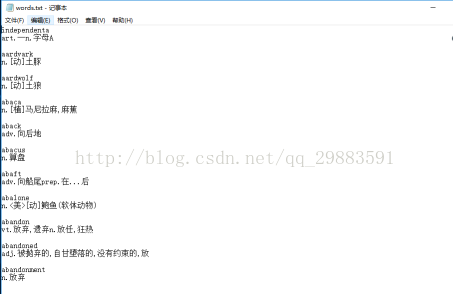numpy concatenate数组拼接方法示例介绍
数组拼接方法一
思路:首先将数组转成列表,然后利用列表的拼接函数append()、extend()等进行拼接处理,最后将列表转成数组。
示例1:
>>> import numpy as np >>> a=np.array([1,2,5]) >>> b=np.array([10,12,15]) >>> a_list=list(a) >>> b_list=list(b) >>> a_list.extend(b_list) >>> a_list [1, 2, 5, 10, 12, 15] >>> a=np.array(a_list) >>> a array([ 1, 2, 5, 10, 12, 15])
该方法只适用于简单的一维数组拼接,由于转换过程很耗时间,对于大量数据的拼接一般不建议使用。
数组拼接方法二
思路:numpy提供了numpy.append(arr, values, axis=None)函数。对于参数规定,要么一个数组和一个数值;要么两个数组,不能三个及以上数组直接append拼接。
示例2:
>>> a=np.arange(5)
>>> a
array([0, 1, 2, 3, 4])
>>> np.append(a,10)
array([ 0, 1, 2, 3, 4, 10])
>>> a
array([0, 1, 2, 3, 4])
>>> b=np.array([11,22,33])
>>> b
array([11, 22, 33])
>>> np.append(a,b)
array([ 0, 1, 2, 3, 4, 11, 22, 33])
>>> a
array([[1, 2, 3],
[4, 5, 6]])
>>> b=np.array([[7,8,9],[10,11,12]])
>>> b
array([[ 7, 8, 9],
[10, 11, 12]])
>>> np.append(a,b)
array([ 1, 2, 3, 4, 5, 6, 7, 8, 9, 10, 11, 12])
numpy的数组没有动态改变大小的功能,numpy.append()函数每次都会重新分配整个数组,并把原来的数组复制到新数组中。
数组拼接方法三
思路:numpy提供了numpy.concatenate((a1,a2,...), axis=0)函数。能够一次完成多个数组的拼接。其中a1,a2,...是数组类型的参数
示例3:
>>> a=np.array([1,2,3])
>>> b=np.array([11,22,33])
>>> c=np.array([44,55,66])
>>> np.concatenate((a,b,c),axis=0) # 默认情况下,axis=0可以不写
array([ 1, 2, 3, 11, 22, 33, 44, 55, 66]) #对于一维数组拼接,axis的值不影响最后的结果
>>> a=np.array([[1,2,3],[4,5,6]])
>>> b=np.array([[11,21,31],[7,8,9]])
>>> np.concatenate((a,b),axis=0)
array([[ 1, 2, 3],
[ 4, 5, 6],
[11, 21, 31],
[ 7, 8, 9]])
>>> np.concatenate((a,b),axis=1) #axis=1表示对应行的数组进行拼接
array([[ 1, 2, 3, 11, 21, 31],
[ 4, 5, 6, 7, 8, 9]])
对numpy.append()和numpy.concatenate()两个函数的运行时间进行比较
示例4:
>>> from time import clock as now >>> a=np.arange(9999) >>> b=np.arange(9999) >>> time1=now() >>> c=np.append(a,b) >>> time2=now() >>> print time2-time1 28.2316728446 >>> a=np.arange(9999) >>> b=np.arange(9999) >>> time1=now() >>> c=np.concatenate((a,b),axis=0) >>> time2=now() >>> print time2-time1 20.3934997107
可知,concatenate()效率更高,适合大规模的数据拼接
PS:更多示例
import numpy as np
a = np.array([[1, 2], [3, 4]])
a.shape
Out[3]: (2, 2)
b = np.array([[5, 6]])
b.shape
Out[5]: (1, 2)
np.concatenate((a, b))
Out[6]:
array([[1, 2],
[3, 4],
[5, 6]])
c= np.concatenate((a, b))
c.shape
Out[8]: (3, 2)
d = np.concatenate((a, b), axis=0)
d.shape
Out[10]: (3, 2)
e = np.concatenate((a, b), axis=1)
Traceback (most recent call last):
File "<ipython-input-11-05a280a2cb02>", line 1, in <module>
e = np.concatenate((a, b), axis=1)
ValueError: all the input array dimensions except for the concatenation axis must match exactly
e = np.concatenate((a, b.T), axis=1)
e.shape
Out[13]: (2, 3)
import numpy as np
a = np.array([[1, 2], [3, 4]])
a.shape
Out[3]: (2, 2)
b = np.array([[5, 6]])
b.shape
Out[5]: (1, 2)
np.concatenate((a, b))
Out[6]:
array([[1, 2],
[3, 4],
[5, 6]])
c= np.concatenate((a, b))
c.shape
Out[8]: (3, 2)
d = np.concatenate((a, b), axis=0)
d.shape
Out[10]: (3, 2)
e = np.concatenate((a, b), axis=1)
Traceback (most recent call last):
File "<ipython-input-11-05a280a2cb02>", line 1, in <module>
e = np.concatenate((a, b), axis=1)
ValueError: all the input array dimensions except for the concatenation axis must match exactly
e = np.concatenate((a, b.T), axis=1)
e.shape
Out[13]: (2, 3)
以上就是本文的全部内容,希望对大家的学习有所帮助,也希望大家多多支持【听图阁-专注于Python设计】。
